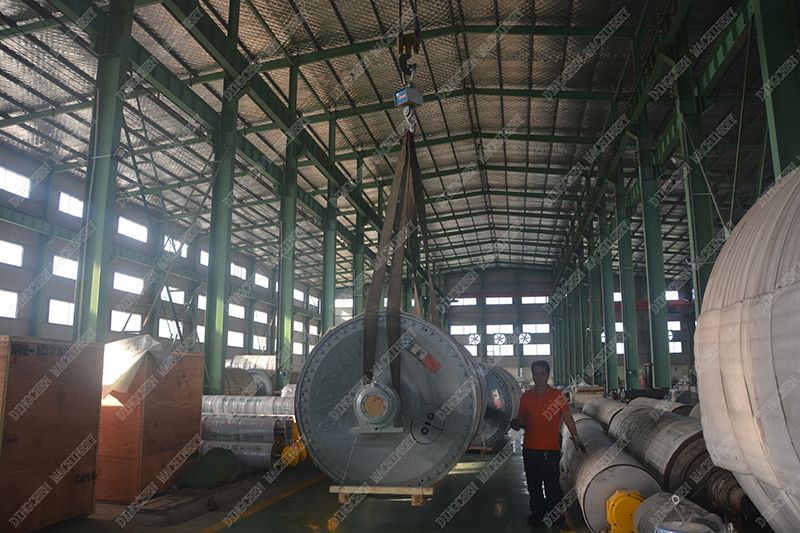In papermaking equipment, the specifications of “Yankee dryers” are rarely described in “kilograms”. Instead, parameters such as diameter (e.g., 1.5m, 2.5m), length, working pressure, and material thickness are more common. If “3kg” and “5kg” here refer to the working pressure of the Yankee dryer (unit: kgf/cm², i.e., kilogram-force per square centimeter), their core differences are mainly reflected in the following aspects:
- Different Working Temperatures
The heating of Yankee dryers usually relies on saturated steam 通入 inside, and the steam pressure is directly related to the temperature (following the steam characteristic curve):
The temperature of saturated steam at 3kgf/cm² (approximately 0.3MPa) is about 133℃;
The temperature of saturated steam at 5kgf/cm² (approximately 0.5MPa) is about 151℃.
The temperature difference directly affects the drying efficiency of paper: the higher the pressure (and thus the higher the temperature), the more heat is transferred to the paper per unit time, resulting in faster drying speed. This makes it suitable for papers requiring high drying efficiency (such as tissue paper and high-speed paper machines).
- Different Drying Efficiency and Energy Consumption
Drying efficiency: The 5kgf/cm² pressure Yankee dryer, with a higher temperature, has a larger temperature difference with the paper, leading to a faster heat transfer rate. It can evaporate more moisture in the same time and adapt to higher paper machine running speeds.
Energy consumption cost: Steam at 5kgf/cm² pressure requires higher boiler output, resulting in relatively higher energy consumption (such as coal, natural gas, etc.). Steam at 3kgf/cm² pressure has lower energy consumption, making it suitable for scenarios where drying speed is not critical (such as low-speed paper machines and thick paper grades).
- Suitable Paper Types and Processes
3kgf/cm² pressure Yankee dryer: With a lower temperature, it is suitable for heat-sensitive paper types (such as some waxed papers, papers with coatings that are prone to heat deformation) or thicker papers that require slow drying to avoid warping and cracking (such as paperboard, thick kraft paper).
5kgf/cm² pressure Yankee dryer: With a higher temperature, it is suitable for tissue paper (such as newsprint, writing paper), cultural papers produced at high speeds, etc. It can quickly remove moisture, ensure efficient operation of the paper machine, and reduce the risk of paper breaking by shortening the residence time of the paper in the drying process.
- Different Requirements for Equipment Material and Safety
Although both 3kgf/cm² and 5kgf/cm² pressures belong to low-pressure vessels (usually, the design pressure of the Yankee dryer is higher than the working pressure with a safety margin), higher pressure means slightly higher requirements for the material strength, sealing performance, and wall thickness of the Yankee dryer:
The cylinder material of the 5kgf/cm² pressure Yankee dryer (such as cast iron, alloy cast iron) must ensure stability under higher pressure. The processing accuracy of welding seams, flange seals, and other parts is more stringent to avoid steam leakage.
Both need to comply with pressure vessel safety regulations, but the 5kgf/cm² pressure Yankee dryer may have more frequent and stricter regular inspections (such as hydrostatic tests).
Summary
The 3kgf/cm² and 5kgf/cm² pressure Yankee dryers essentially adjust temperature and drying efficiency through steam pressure differences. The core differences lie in drying speed, energy consumption cost, and suitable paper types. The selection should be comprehensively judged based on paper machine speed, paper type characteristics, energy consumption budget, etc. A higher pressure is not necessarily better; it needs to match the production process requirements.
Post time: Aug-12-2025


